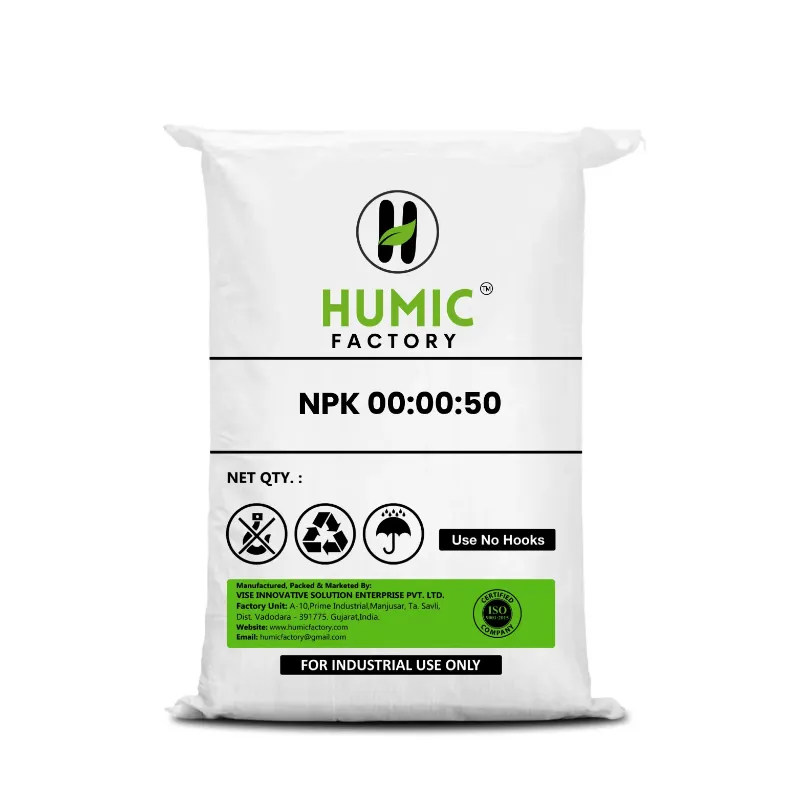Transitioning from conventional to organic farming is a significant step for any farmer, promising numerous benefits including improved soil health, enhanced biodiversity, and sustainable crop production. However, the process involves careful planning, adaptation, and commitment. This blog provides practical insights into how farmers can make this transition smoothly and effectively, with a particular focus on how Humic Factory’s products can support this journey. Organic farming is an agricultural method that avoids synthetic chemicals, fertilizers, and genetically modified organisms. Instead, it relies on natural processes and inputs to maintain soil fertility, control pests, and promote healthy crop growth. Key principles include:Understanding the Basics of Organic Farming
Soil Health: Emphasis on maintaining and improving soil fertility through natural means.
Biodiversity: Encouraging diverse ecosystems to naturally control pests and diseases.
Natural Inputs: Using organic fertilizers, compost, and other natural substances.
Steps for a Successful Transition
1. Educate Yourself
Before making the switch, it’s essential to understand the principles and practices of organic farming:
Research: Read books, attend workshops, and connect with experienced organic farmers.
Training Programs: Participate in government-sponsored or private training programs on organic farming techniques.
2. Assess Your Current Practices
Evaluate your existing farming methods to identify areas that need adjustment:
Soil Health: Analyze soil conditions and nutrient levels.
Pest and Disease Management: Review current pest control methods and their impacts.
3. Develop a Transition Plan
Create a comprehensive plan that outlines the steps and timeline for transitioning to organic farming:
Phased Approach: Gradually reduce the use of synthetic inputs while increasing the use of organic alternatives.
Crop Selection: Choose crops that are well-suited for organic methods and local conditions.
4. Implement Organic Practices
Begin implementing organic farming practices in stages:
Soil Preparation: Use organic compost and natural fertilizers to improve soil health.
Pest Management: Adopt integrated pest management (IPM) strategies that rely on natural predators and organic pesticides.
Crop Rotation: Implement crop rotation to maintain soil fertility and prevent pest build-up.
5. Obtain Organic Certification
To market your products as organic, you need certification:
Certification Bodies: Choose a recognized certification body to verify that your practices meet organic standards.
Compliance: Ensure that all aspects of your farming practices comply with organic regulations.
6. Monitor and Adjust
Regularly evaluate the performance of your organic practices:
Soil Testing: Conduct periodic soil tests to monitor fertility and nutrient levels.
Crop Performance: Assess crop yields and quality to determine the effectiveness of organic methods.
7. Engage with Support Networks
Leverage resources and support networks to enhance your transition:
Local Organic Farming Associations: Join local groups for support, resources, and networking.
Online Forums and Communities: Participate in online forums to share experiences and gain insights.
How Humic Factory’s Products Support the Transition
Humic Factory offers a range of products that can facilitate a smooth transition to organic farming:
1. Organic Fertilizers
Humic Factory’s organic fertilizers provide essential nutrients without synthetic chemicals:
Soil Enrichment: Enhance soil fertility and structure, crucial for successful organic farming.
Balanced Nutrition: Support healthy crop growth through natural nutrient sources.
2. Biofertilizers
Biofertilizers from Humic Factory help improve soil health and plant resilience:
Soil Microbes: Introduce beneficial microorganisms that enhance nutrient uptake and soil structure.
Sustainable Practices: Align with organic farming principles by reducing reliance on synthetic inputs.
3. Humic Acids
Humic acids play a vital role in maintaining soil health and enhancing nutrient absorption:
Soil Improvement: Improve soil structure, water retention, and nutrient availability.
Plant Growth: Support robust plant growth and development.
Best Practices for a Successful Transition
To ensure a successful shift to organic farming, consider the following best practices:
1. Start Small
Begin with a small portion of your farm to test and refine organic practices before scaling up.
2. Educate and Train Staff
Ensure that all farm workers are trained in organic farming practices and understand the new methods.
3. Track Progress
Keep detailed records of soil conditions, crop performance, and input usage to monitor progress and make necessary adjustments.
4. Stay Informed
Keep up-to-date with the latest research, innovations, and best practices in organic farming to continually improve your methods.
Conclusion
Transitioning from conventional to organic farming is a rewarding journey that requires careful planning, education, and adaptation. By following a structured approach and leveraging resources such as Humic Factory’s organic fertilizers, biofertilizers, and humic acids, farmers can successfully navigate this transition. Embracing organic farming not only enhances soil health and crop quality but also contributes to a more sustainable and environmentally friendly agricultural system. With the right support and resources, farmers can achieve a successful transition and enjoy the long-term benefits of organic farming.





